Walk into any garage that reflects the GSM lifestyle (and that could be virtually “any” garage) and you will undoubtedly notice one common element. Whether it’s a garage full of brass cars, steam cars, classic cars, muscle cars, sports cars or project cars…. there will certainly be a “work bench.”
GSM garages play various roles; they are used to showcase restored examples, used to maintain “drivers,” or set up as restoration sites; in all three examples the workbench plays an integral part of the scene. In showcase garages you will find cleaners, polishers, buffers, elixirs and intergalactic cloths on the benches; while in restoration purposed garages you will find cast iron engine blocks, gearboxes and generators in various states of disarray; not to mention dog eared and grease stained workshop manuals. In both examples you will probably also find half empty coffee mugs, beer bottles, potato chips, and the occasional bottle of champagne….the symbols of both celebration and surrender.
The domestication of the horse was an important step toward civilization. Evidence of wheeled vehicles appears from the mid-4th millennium BC with ox carts being the earliest vehicles. As David Anthony writes in his book “The Horse, the Wheel and Language,” in Eastern Europe, the earliest wheel-dated depiction of a wheeled vehicle (a wagon with two axles and four wheels) is on the Bronocice pot (c. 3500 BC). It is a clay pot excavated in a funnel beaker settlement in southern Poland. The earliest spoke-wheeled chariots date to ca 2000 BC. It was probably during the era of the chariot (for both military use and racing games) that the “workbench” evolved. The need to repair the chariots, wheels, and related accessories prompted the creation of “repair shops,” which were either permanent structures or mobile (that accompanied the armies in distant campaigns). The first workbenches were probably thrown together from trees mounted on stones that enabled the craftsmen to pound sickle-shaped blades onto the end of each axle.
Today the GSM’er has a variety of options. The standard home-made wood bench up to the over-the-top modular lacquer faced cabinet-workbench combinations. The benches can be made of stainless steel with metal tops or wood butcher block tops. A restoration shop where I apprenticed used repurposed wooden bowling alley lanes; they worked like a charm. It’s not unusual to find discarded kitchen cabinets with heavy doors mounted to their tops to serve the purpose. When it comes to workbenches the full spectrum is available based on purpose, space, budgets, and personal taste.
An article in “Popular Mechanics” magazine (Dec. 1924) highlights a novel (see drawing) “Movable workbench.” G.A Luers reported, “In an automobile repair shop in western Maryland the writer observed a small repair table, made from an old steel oil drum and mounted on casters so that it could be moved about. A wooden top was bolted on the drum, and on this top a small vise and hand grinder were mounted. A semi-circular opening was cut in the side of the drum so that oilcans, greasing equipment, waste and various stools for tire and other repair work could be stored when not in use. Casters were riveted to the side near the bottom, as indicated in the detail. Obviously, the use of this table saved many steps to and from the workbench, and thus eliminated waste of time. It was possible even to put an engine on this sturdy table and move it to another section of the shop.”
At the last Hershey swap meet a vendor had a 1940’s “Alemite mechanics workbench.” This was an art-deco designed set of cabinets, workbench, and drawers provided by the Alemite (suppliers of grease equipment) to garages using and promoting Alemite grease products. Other companies including Lincoln also furnished similar “branded modular workbenches.” The workbench was very tempting and would certainly have been the centerpiece of our garage, but in addition to needing a full restoration, it came with a price tag that relegated it to the back burner.
The idea of a “themed workbench” (inspired by the Alemite workbench) began to challenge me. I inherited a derelict, discarded wood workbench that I had thought needed to be made bite-sized for my fireplace. The more I looked at it, the more convinced I was that this might be the foundation of a “themed workbench.” I chose Shell as my centerpiece of the project. I liked the colors, design, history, and racing legacy that Shell represented. Of course you can choose any “theme” including other oil companies (Texaco, Gilmore, Esso, Gulf, Castrol or some other obscure ones); it is simply up to individual taste, attraction, and affiliation. Additionally, you can select a “marque” (Ford, Chevy, Jaguar, Ferrari, Porsche, Lotus, Delage or virtually any current or extinct make) for your theme. Beyond oil companies and car companies, you can also select favorite races or race tracks (Indy, Le Mans, Watkins Glen, Pebble Beach, London to Brighton, Monaco, Silverstone etc.). To embellish the workbench, you can obtain signs, cans, clocks, lights, posters that reflect your “theme.” While having original petroliana and automobilia to adorn your workbench is preferred, there are inexpensive (relatively) reproductions (which might be preferable if the workbench is going to be actually used as a workbench). For my Shell-themed workbench, I simply had to reinforce the structure and replace any suspect wood. I painted it in traditional Shell red and yellow livery, and used some sheet metal (with a reproduction Shell sign) to finish off the open end of the workbench. With some of the shelf wood letters (from the big box hobby and craft stores) I fashioned a sign and attached it to the back of the bench. I added a power outlet strip as well as a dozen milk crates for storage. I opted to refinish the wood surface as it gave it some needed patina; but was alternatively considering using a ribbed rubber mat for the surface. Because I focus on British cars, I opted to use the terms “petrol” and “spirit” (British terms for gasoline) in signage. Our pre-war Aston Martin actually raced at Brooklands, and my brother Phil and I competed in the Mille Miglia Storica, so we decided to promote those events (and threw in Le Mans since Astons raced there as well). The project was both rewarding and satisfying. The costs were very reasonable, and amounted to approximately $200, including the reproduction signs.
The creation of a “themed workbench” can not only set the tone for a garage, but provide the GSM’er with a place to repair, restore and rejuvenate components as well as a place to plan, ponder, and procrastinate. However you design your workbench, just be sure it has room for a six-pack, a pizza, and the latest issue of Garage Style Magazine.

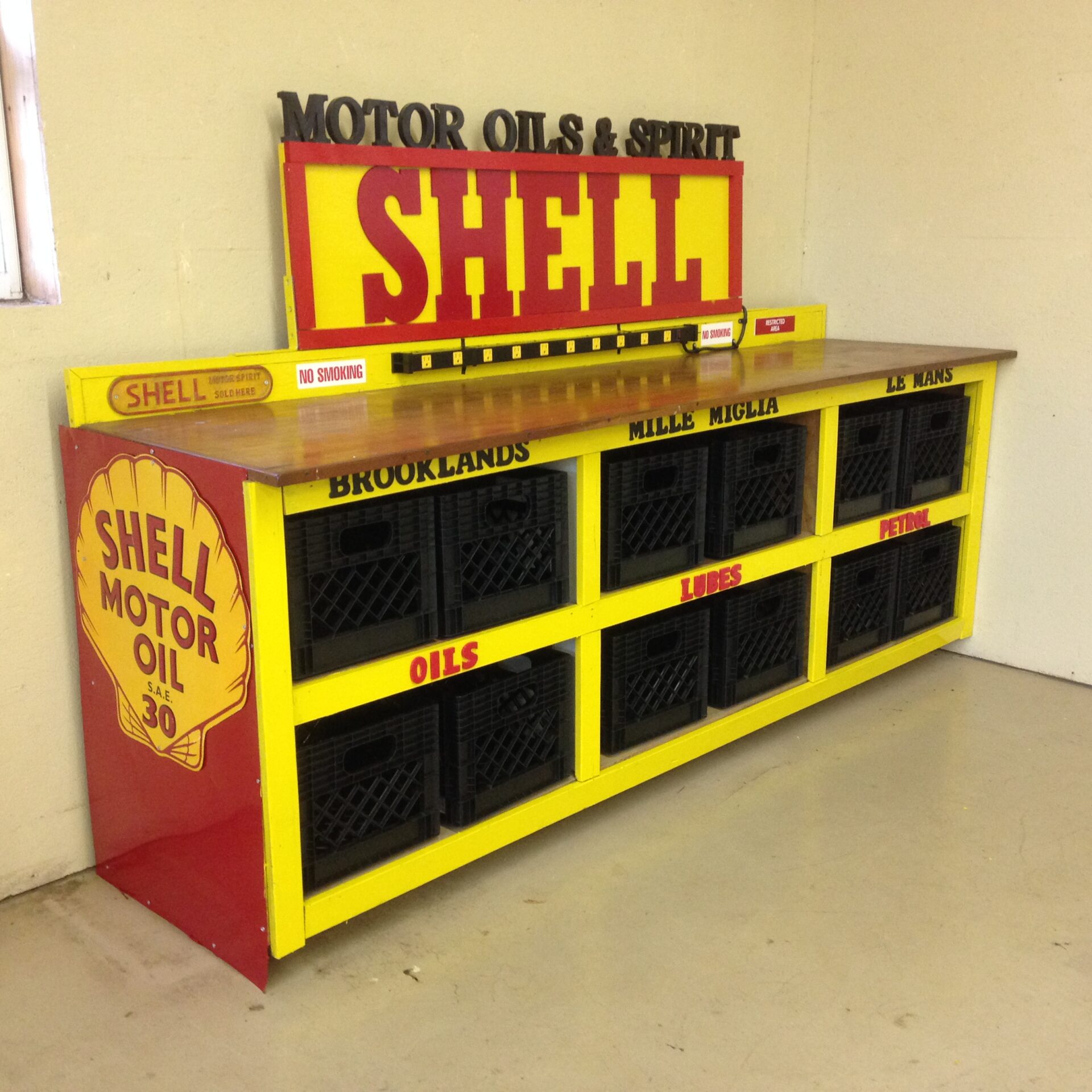

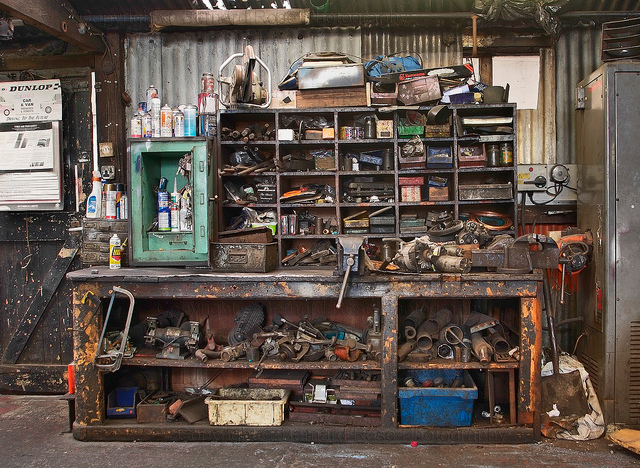
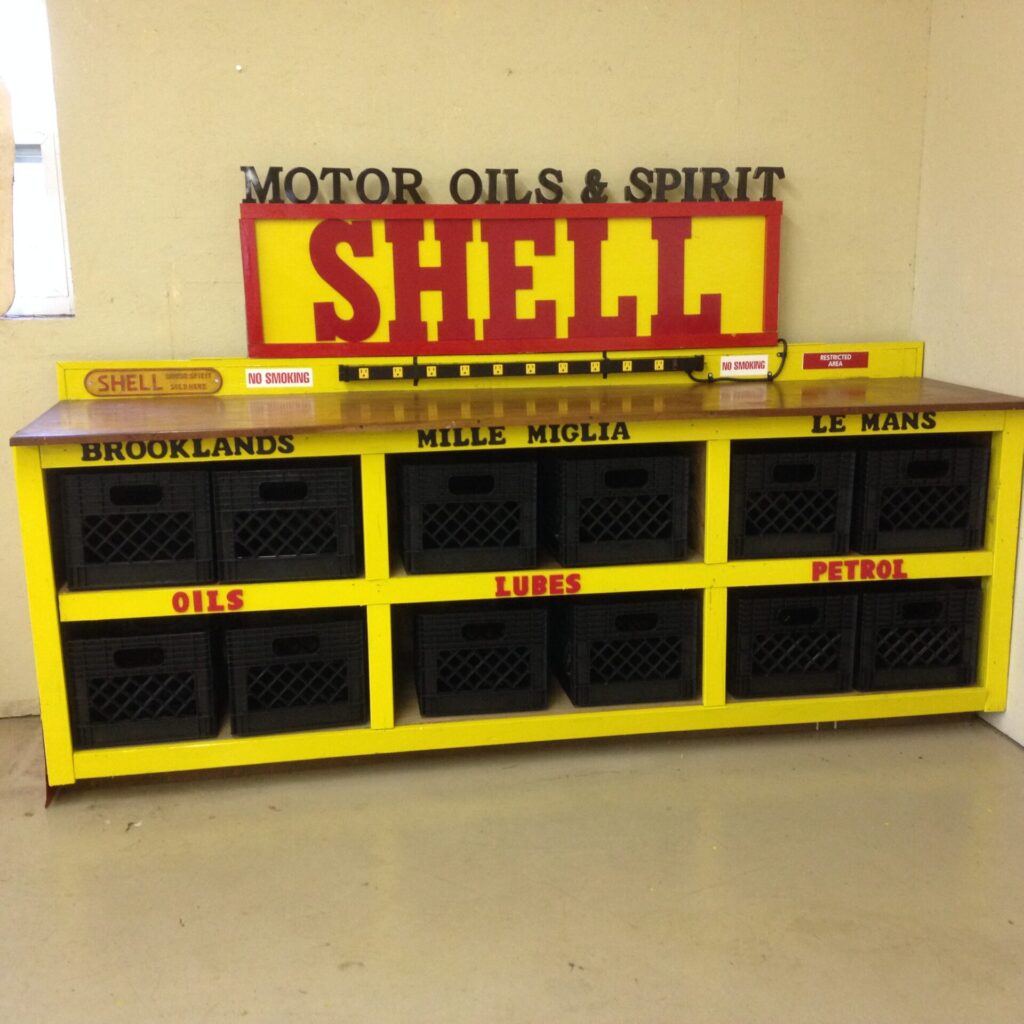

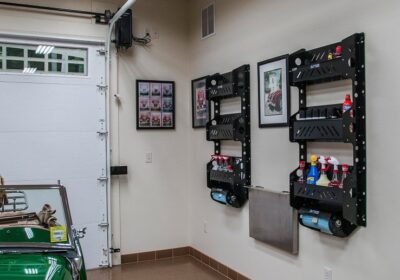
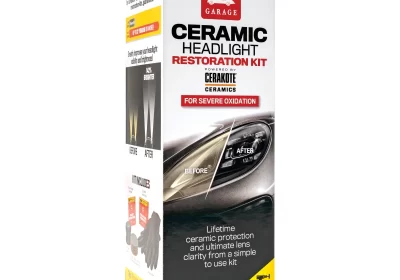
Looks too good to wrench on but pounding on it will give it some great patina